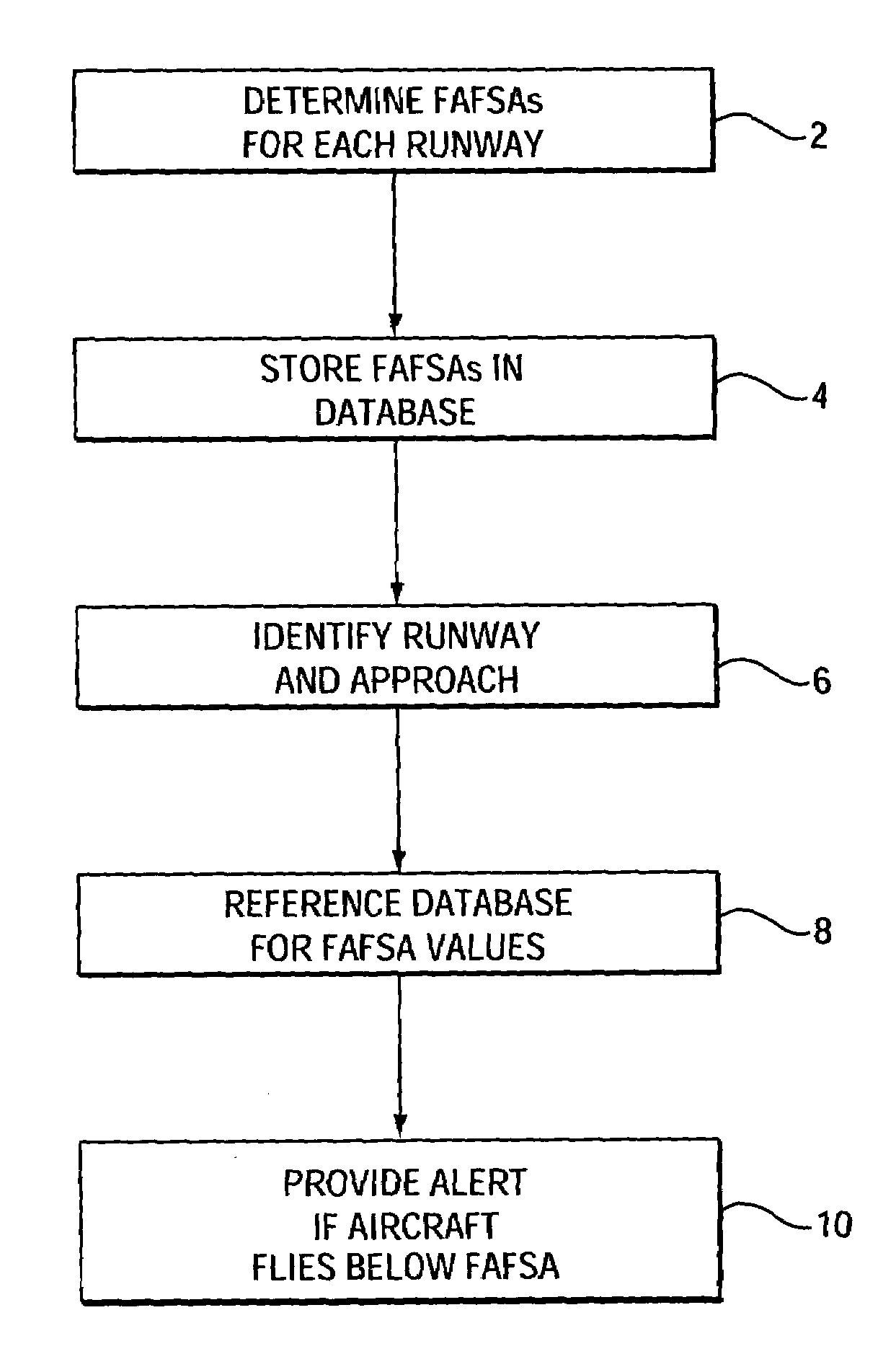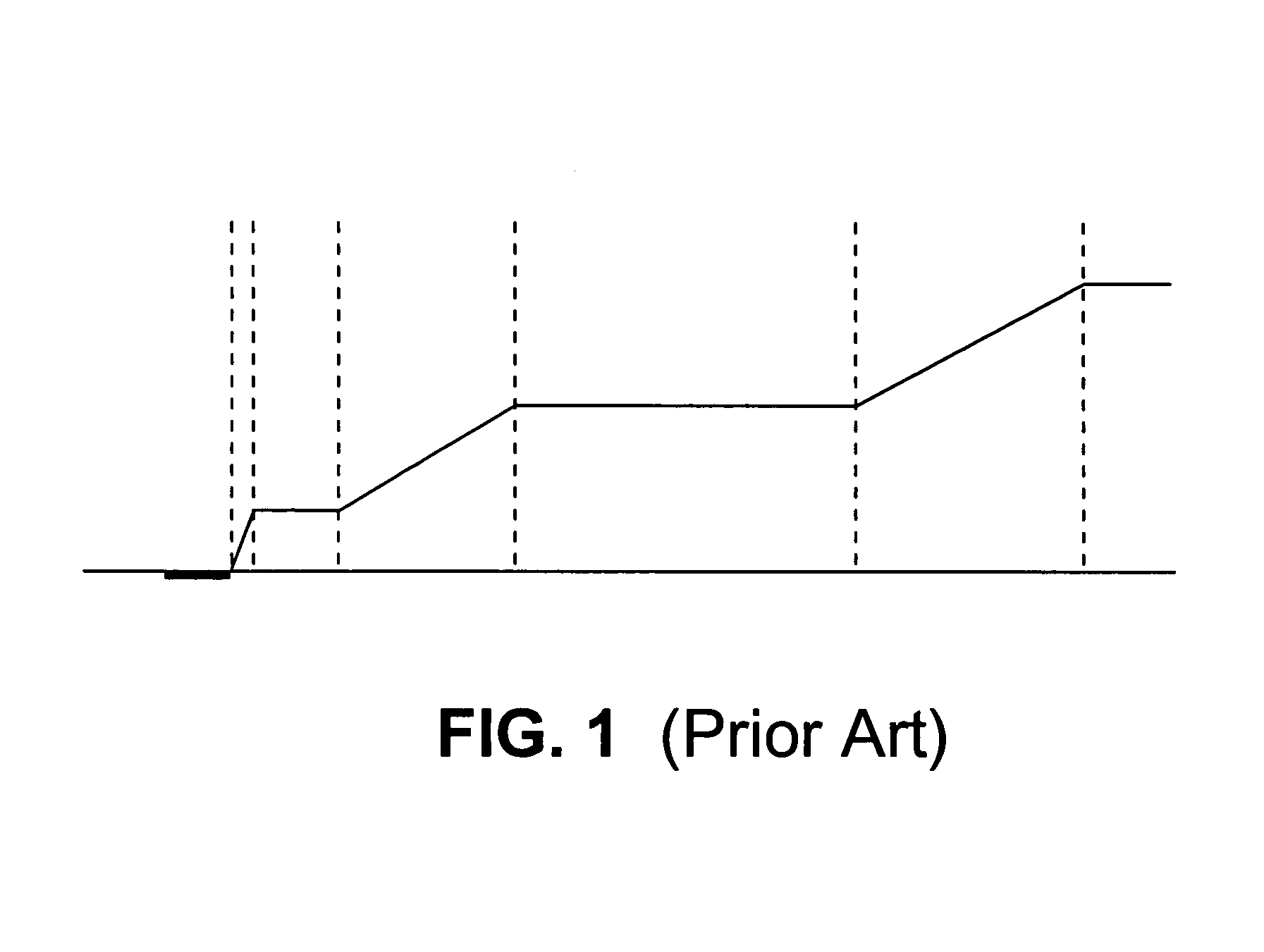Avionics system and method for providing altitude alerts during final landing approach
a technology of altitude alert and final landing, which is applied in the direction of process and machine control, instruments, and navigation instruments, can solve the problems of flight level system, terrain alert system, and conventionally provided fixed altitude flight level or fixed terrain clearance level for fixed radial distances from runway, etc., to reduce nuisance alerts, increase reliability, and increase safety
- Summary
- Abstract
- Description
- Claims
- Application Information
AI Technical Summary
Benefits of technology
Problems solved by technology
Method used
Image
Examples
example 1
[0026]For a particular runway specific to the present example, there are two possible approach patterns, one from the East and one from the West. The runway is situated at the edge of a high cliff (500 feet above the ocean to the East) and is 3.5 miles from a high mountain to the West (elevation 2000 feet above ocean). In determining FAFSA values for the runway, two sets of data are created, one for the approach from the East and one for the approach from the West. For the example, assume the elevation of both ends of the runway is the same (500 feet).
[0027]The following FAFSA for a particular aircraft and the approach from the West was calculated and determined: between 4 to 5 NM=3900 feet above ocean; between 3 to 4 NM=3250 feet; between 2 to 3 NM=2200 feet; and the FAFSA slopes down from 2200 feet to the start of the runway. Additionally, a transition slope for the FAFSA was used between each distance segment. The Required Obstacle Clearance value for the approach phase of flight...
PUM
 Login to View More
Login to View More Abstract
Description
Claims
Application Information
 Login to View More
Login to View More - R&D
- Intellectual Property
- Life Sciences
- Materials
- Tech Scout
- Unparalleled Data Quality
- Higher Quality Content
- 60% Fewer Hallucinations
Browse by: Latest US Patents, China's latest patents, Technical Efficacy Thesaurus, Application Domain, Technology Topic, Popular Technical Reports.
© 2025 PatSnap. All rights reserved.Legal|Privacy policy|Modern Slavery Act Transparency Statement|Sitemap|About US| Contact US: help@patsnap.com



